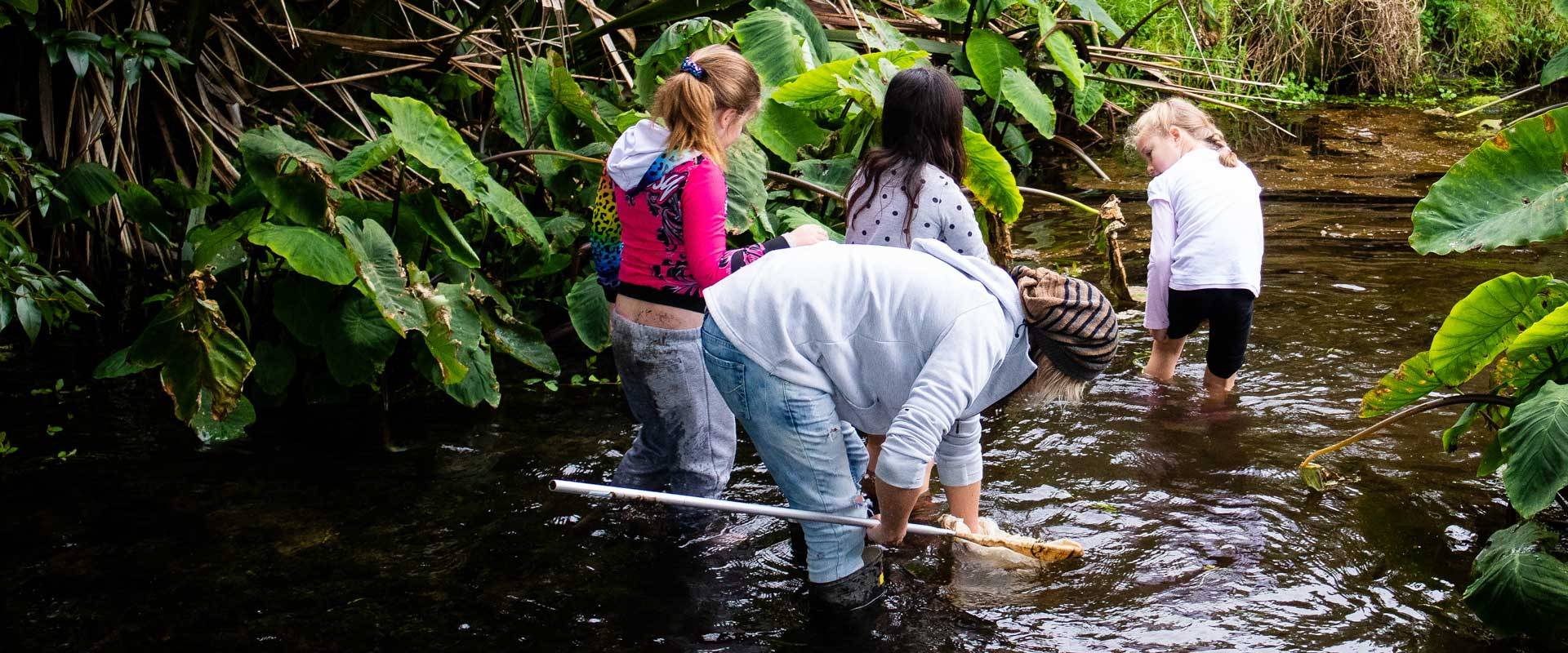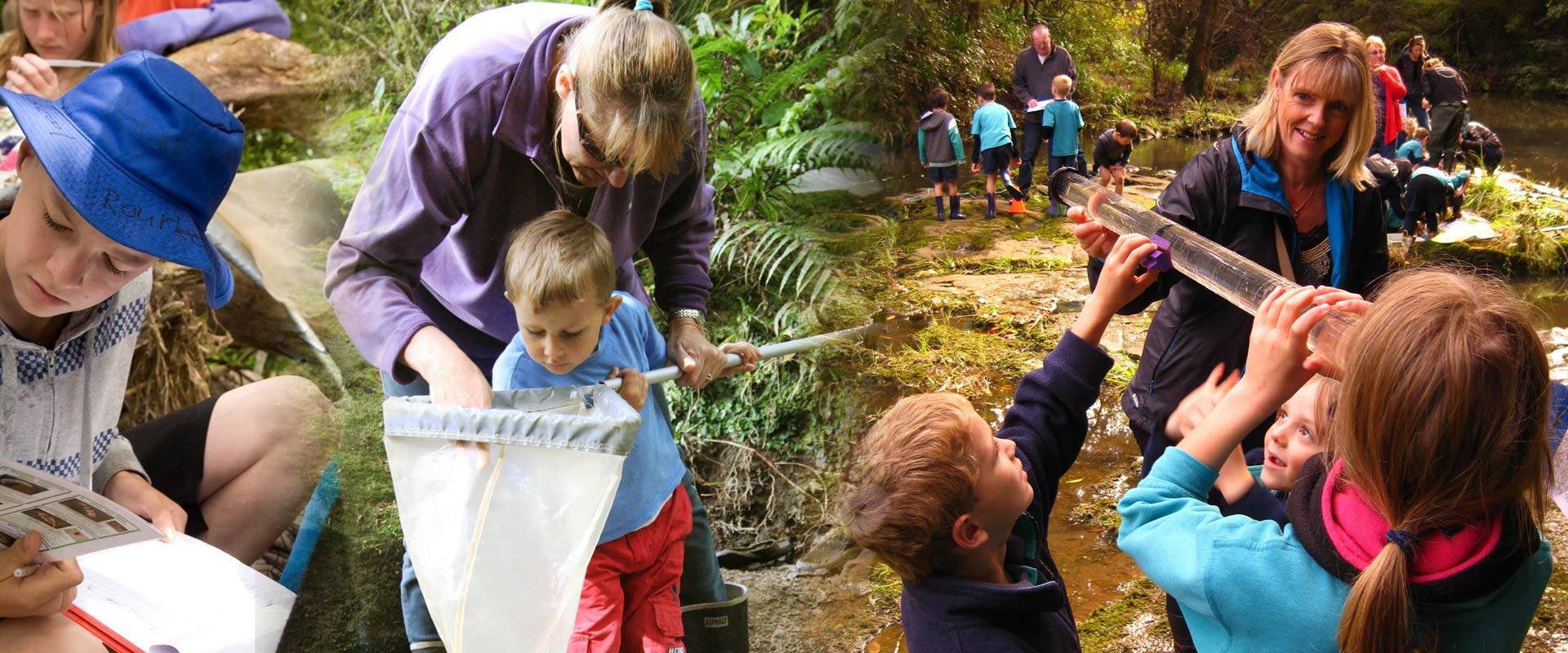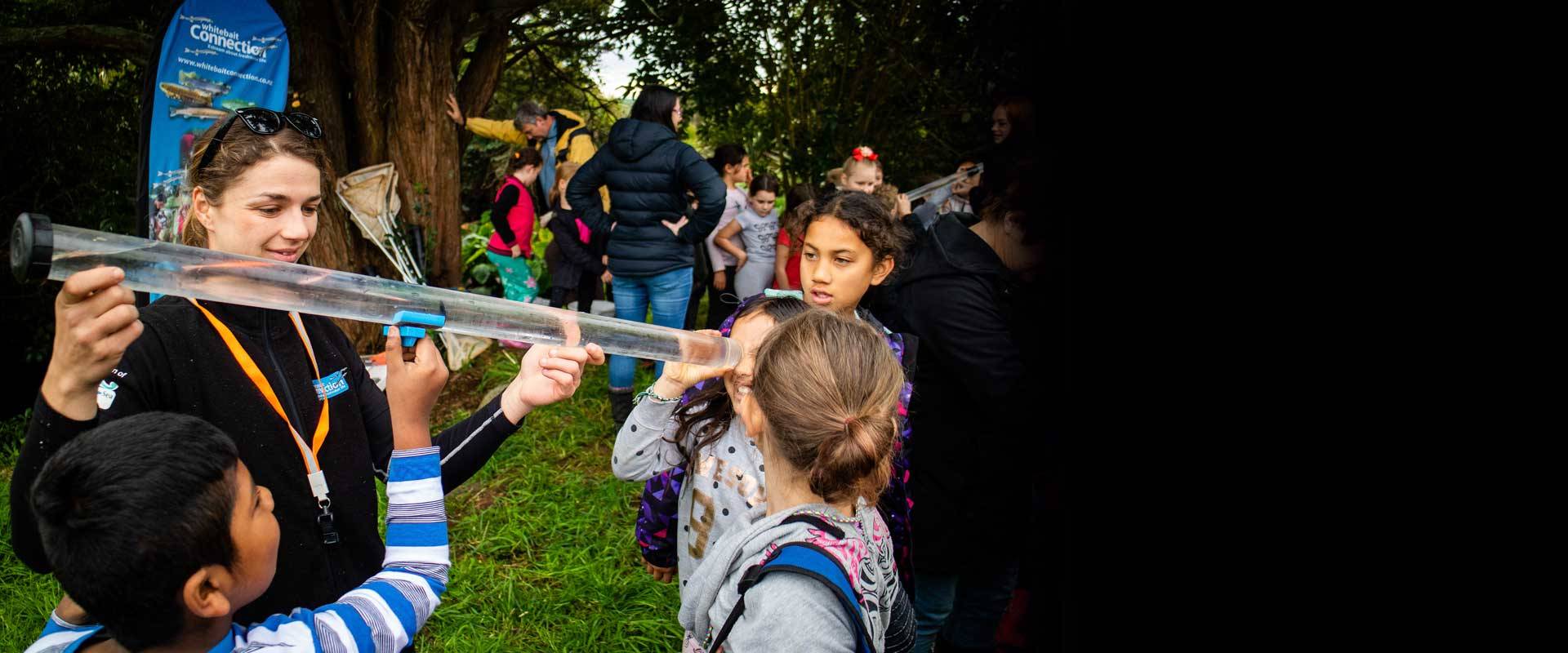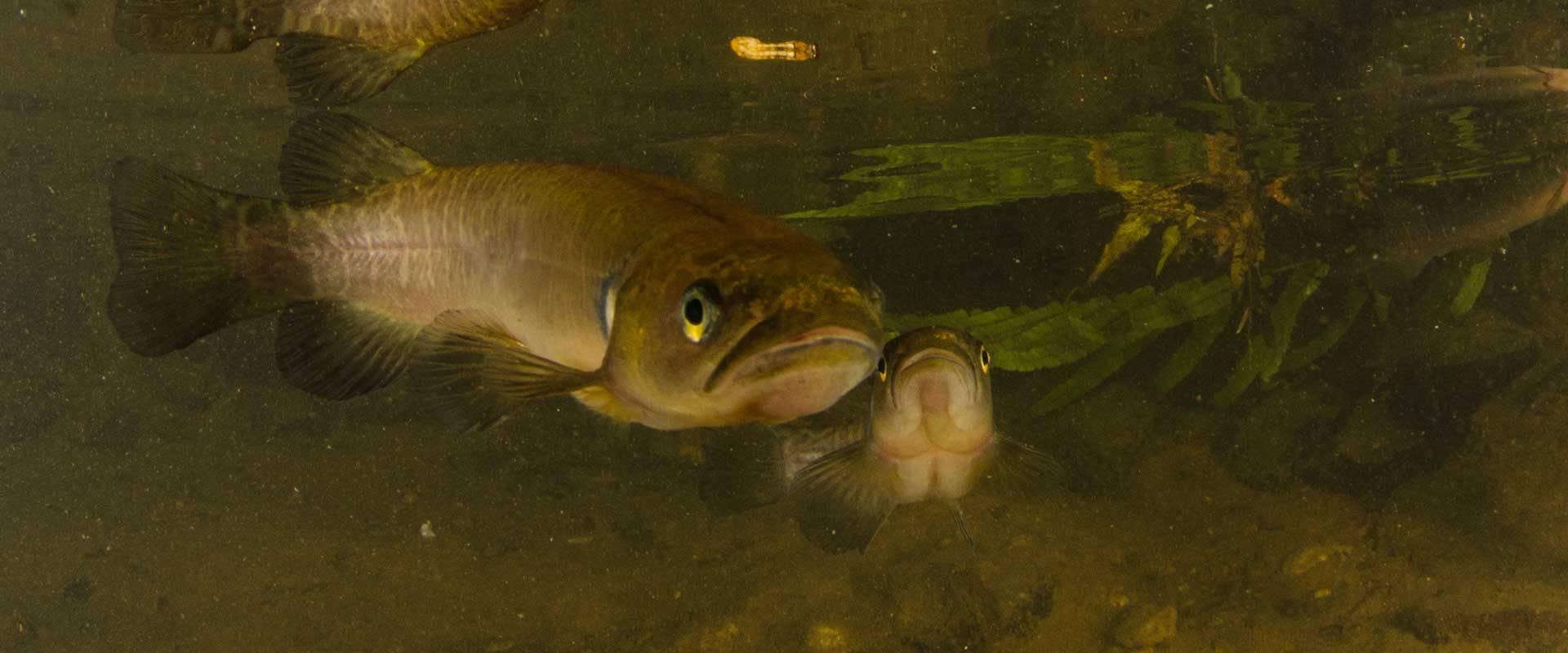In term 3 of 2022 Nic from Whitebait Connection delivered a programme to Ruakākā School's Te Whānau Harakeke bilingual unit as part of the Northland Inanga Spawning Project Bream Bay catchment mahi. The programme included field trips to the nearby Sandford Road awa and the Line's property stream which flows into the Ruakākā awa.
The Sandford Rd awa is bush clad. On the field trip the students noticed that there was good shade over most of the awa, and that there was good water flow. The instream habitat had riffles and deep pools, where different types of water bugs and fish could live. One shortfin tuna and one juvenile banded kokopu were caught, and there were not many invertebrates.
The Lines’ property awa flows through open farmland. The students noticed that there was very little shade and lots of pest plants in the water. There was poor water flow and the water wasn't very clear. The fish caught at the Line's stream included common bullies, īnanga, longfin tuna and shortfin tuna. The pest fish gambusia was also caught. Macroinvertebrate samples consisted of freshwater shrimp, worms, snails, damselflies, water boatmen and mosquito larvae.
As part of their action the students from Te Whānau Harakeke planted 300 harakeke plants along the Ruakākā awa at the Cave's property just downstream of the Line's. This contributed to the planting happening along the inanga spawning zone on the Ruakākā awa as part of the Northland Īnanga Spawning Project in the Bream Bay catchment.









